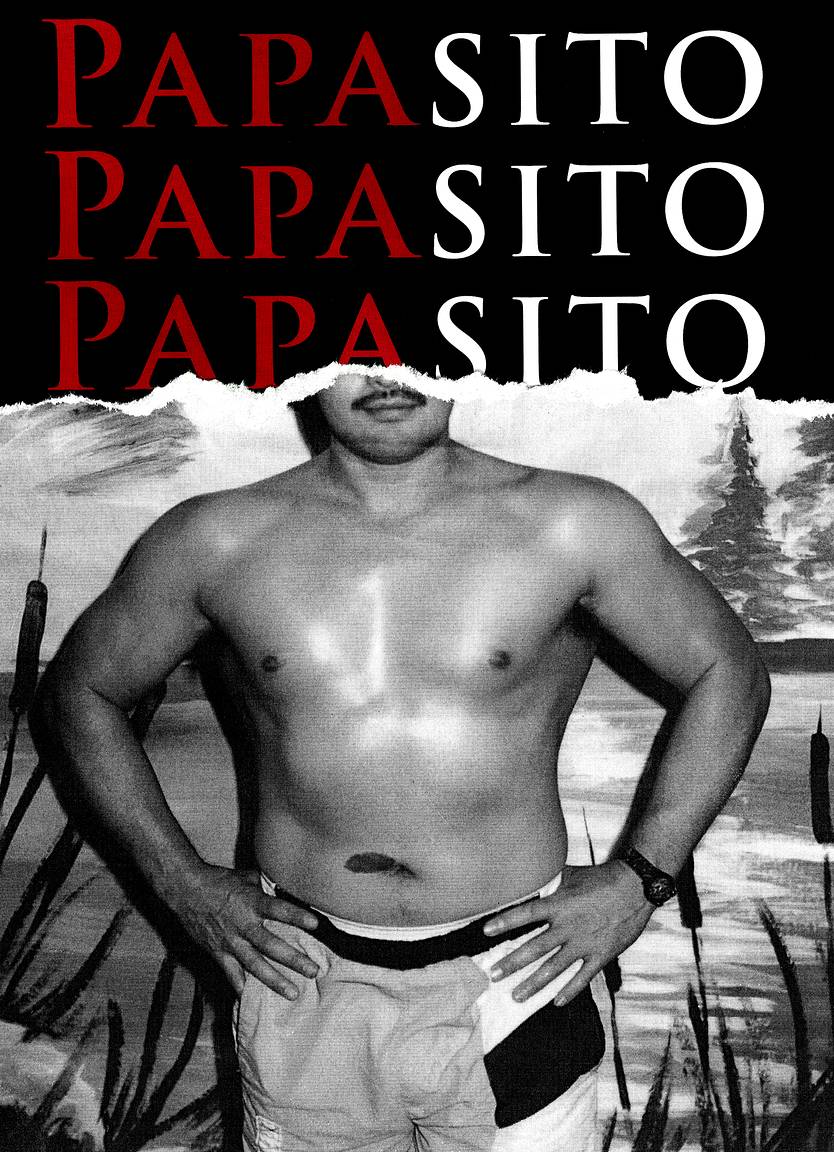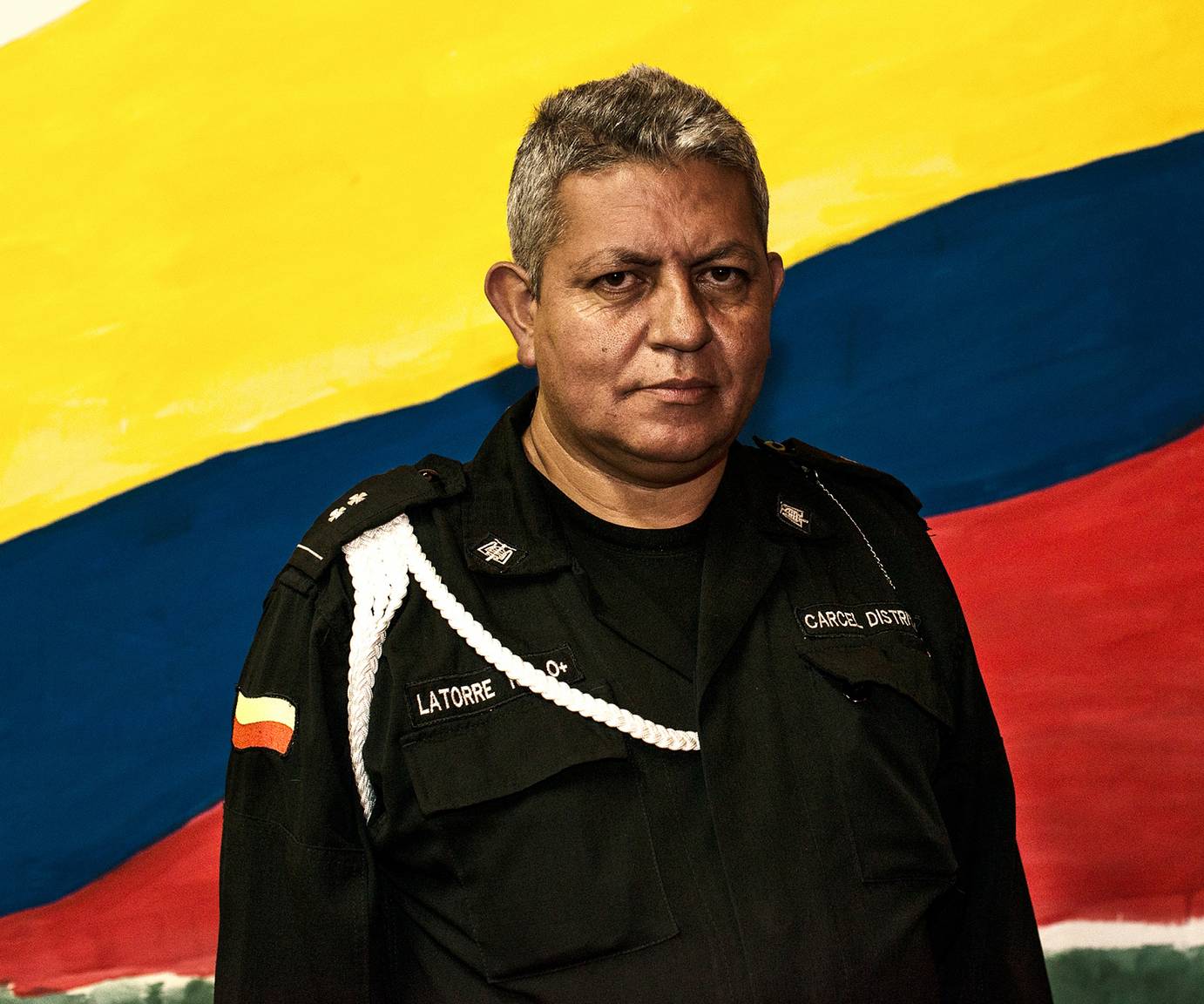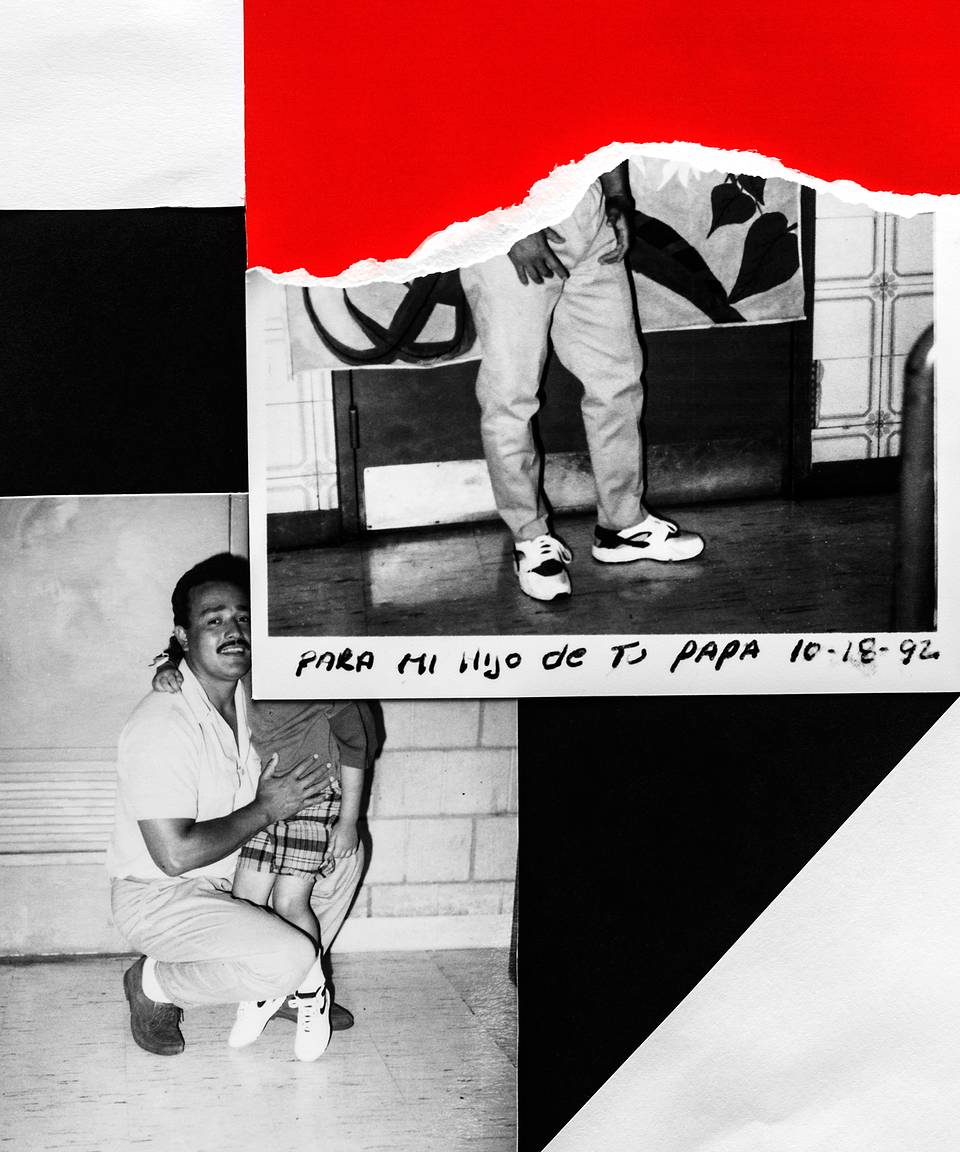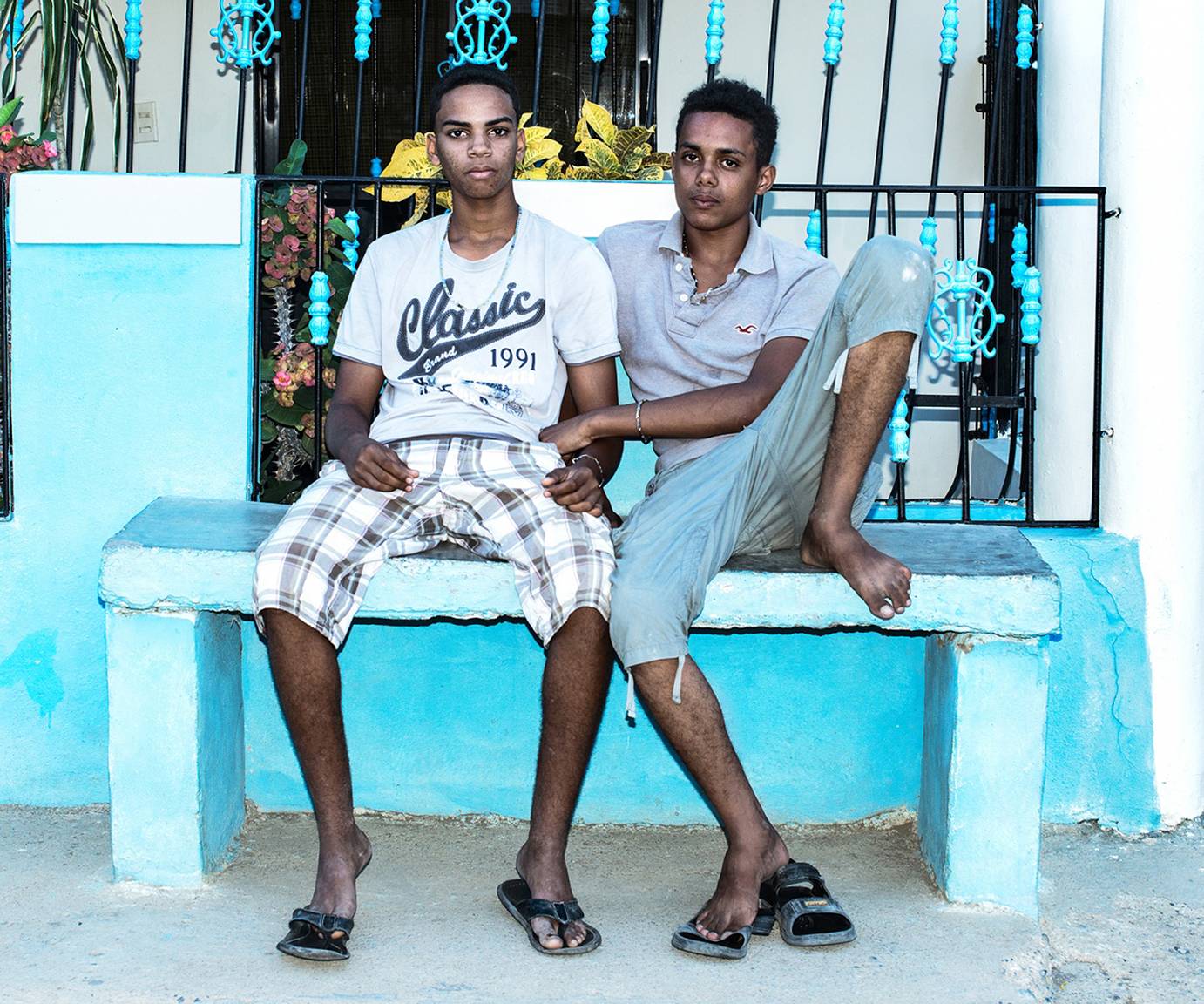A Question of Latino Manliness: an Interview with Antonio Pulgarin
6 Share TweetLens-based artist Antonio Pulgarin's "Fragments of the Masculine" is an on-going project that utilizes photography and photographic collage to create conceptually focused works that tackle the themes of cultural and sexual identity, memory, and displacement.
Informed by his connections to both his Colombian Heritage and the Latino narrative in America, his current work uses an archive of found images of his uncle and biological father. These archival images represent specific times in the lives of these men; images from his uncle's youth including his time spent in the Colombian Military, and polaroids of his father from his time in prison.

As an adolescent, it was only through these photographs that Pulgarin was able to connect with these two men, linking the depiction of the Military and the Prison System to ideas of masculinity.
Through this new work, Pulgarin seeks to challenge the construct of Latino Masculinity, or Machismo, all while re-contextualizing the fabric of his own identity. Each image in this series presents a deconstructed version of the original archival images as he interprets them, incorporating cultural materials and the colors of the Colombian flag. These images place emphasis on the fragmented relationship he shares with both his culture and these central figures in his life.
Hi Antonio! Welcome to Lomography Magazine! Firstly, how did you start off as a photographer?
Hello! Thank you very much for having me. My journey into photography started in middle school when I was just about 11 or 12 years old. The middle school I attended provided two art class options: your traditional drawing/painting course, and a course in Darkroom Photography. Originally, I chose the traditional course, but walking past the Darkroom on my way to class every day quickly inspired me to switch courses. I embraced Photography and the Darkroom immediately after that. The feeling of developing your own film and prints—seeing your vision come to life throughout the entire chemical process—was one that continues to stay with me even till this day. From then on, the rest is history. I continued my studies through high school, then went on to get my BFA in Photography at the School of Visual Arts. It was at SVA that I started to really hone my craft and make the necessary connections to pursue a career as a photographer.
Your main medium is photography and photo-collage. What got you into collage?
What originally got me into collage was my creative need to resolve the ideas and concepts I had circulating in my head. I was just discovering this archive of images of my late uncle and my biological father, archives that would later be the basis of my latest body of work, "Fragments of the Masculine." I wanted to create something tangible and substantial with these archives, but at first, I didn't know how to go about it. One day, I decided to reproduce a portrait of my uncle from the archive, and began ripping, deconstructing, and photographing the recontextualized image. Once I realized I had created a new composition from the original source material, I began to experiment further by incorporating patterned printed materials and cultural dialect into my work. I also started to examine the works of artists of the Pictures Generation of the 1970's and the 1980's in order to further understand the progression of my own art practice.
As much as I love the photographic medium and the important role it plays in my art practice, the label of "photographer" now feels somewhat foreign and/or limiting to me, at least for the moment. I am just now learning to embrace the term Lens-Based Artist. Don't get me wrong: photography will always be at the core foundation of my work. But as my art practice continues to evolve, I look to incorporate other mediums and elements into my work.
Your series "Fragments of the Masculine" somehow deconstructs the trope of the macho man in Latin America. May you share with us your own experience or observation in which you've realized this 'machismo'? What is it like?
Growing up I was constantly bombarded with these traditional ideas of Masculinity. My first experience with this construct of Masculine Identity occurred during my teenage years. Every Latino male figure in my life, be it my step-father or Godfather, seemed to embody this hyper Masculine energy and identity that felt both distant and foreign to me. Growing up I felt this immense pressure to live up to this idea of what a man was expected to be in our culture. To further elaborate, I was still just this young kid trying to understand his own sexual and cultural identity - so growing up exposed to these ideas were both enlightening and alarming. It was alarming because around this same time I began to both confront and accept my identity as a gay man. I also began to experience what it meant to exist as a gay man within the Latino culture.
Growing up within my community, I often heard disparaging criticisms of homosexuality. Throughout my adolescent years, I was made to understand that being gay contradicted what it meant to be a Masculine Latino Male. As I got older and became more comfortable in my skin I started to formulate my own identity without fear of judgment, in turn shedding these archaic ideas of masculinity. I incorporated these experiences into my work and soon after realized that what started as a personal narrative quickly expanded to a universal one. After I premiered ‘Fragments of the Masculine’, I began receiving messages via social media from individuals from different sectors of the world. It was comforting to read their words but what struck me the most was hearing from men of color write to me about their own experiences and connections to the narrative of this project. Hearing others relate and connect to this work meant a great deal to me and for me therein lies the power of Art. I am a firm believer in the idea that the photograph or work of art is never really complete until an audience connects with said work. I believe that until that organic moment between the art and the consumer of said art is shared then the artwork in question will always be incomplete.
In today's world, women fight for their rights, try to become more than the boxed 'feminist, soft, fragile' beings that society labeled them. However, there is little discussion about men who are 'soft, fragile, emotional', and such; if anything, an overlooked gender issue. Mind sharing with us your thoughts on this?
Another phenomenal question! But before I can answer, I would be remiss if I didn't acknowledge that women in our industry are still fighting to be respected and acknowledged for their talent. In the wake of the recent #MeToo movement, I'm happy to see that women in our industry are finally being given the platform to speak out on the injustices they have had to endure but I am saddened by the fact that they have had to endure such experiences in the first place. I know an array of talented female photographers and artists whose work is absolutely brilliant and they deserve to be seen and not harassed.

But yes back to the question at hand - I do believe that there is very little discussion on the construct of Masculinity and Masculine culture in general but more specifically the impact it has on men of color. Seeing men within my culture embracing emotion was just not something I saw growing up. The Latino male and emotions seemed to be foreign concepts to one another. In my teenage years, I never witnessed a man in my family or community crying. Now that I think of it, the only time I've ever seen my step-father shed a tear was when his father passed away and even then he was quiet, stern, and buried his emotions - not allowing us to see him in that moment.

Shedding tears or emotion was not something that was forbidden in my house or where I grew up but it was certainly looked down upon if you were male. The term “Man-Up” was one that was constantly thrown around whenever my emotions got the better of me as a young boy - which is why even until this day I hate the sensation of crying and avoid it at all costs if I can. It astonishes and perplexes me that it's acceptable for men to recount the tales of their latest sexual conquests but embracing emotions that go beyond the surface leads to the emasculation of their identity. These experiences are ones that I channeled into the creation of “Fragments of the Masculine” in hopes of shedding light on this topic and contributing to a larger conversation. Through my work, I hope to encourage a healthy and progressive discussion on the topic. I really want to dissect the ideas behind Toxic Machismo and refute the idea that men who show vulnerability aren't Masculine.
Onto your images' aesthetics, you utilize a lot of macho elements from both military and prison, only to be seen as torn apart or crumpled. May you explain this to us further? Why did you choose the military and the prison to represent machismo?
Well the initial conceptual intention behind the tearing and crumpling these photographs was to deconstruct the original images. However, I also wanted to create new compositions that also deconstructed the traditional ideas attached to the original source material. In each new image that I create I incorporate elements of my cultural upbringing and personal experiences to further differentiate the original image from the new composition that's created. My goal was to recontextualize the original source material to reflect the complexities of Masculine culture within Latin America. Ultimately I hope that this work will further contribute to the Latino narrative in America and encourage an ongoing discussion on Machismo culture.
The men pictured in ‘Fragments of the Masculine’ are my biological father and uncle. My biological father was never part of my life growing up and I only ever got to know him through this lens of imagery and seeing him in the prison system. My uncle on the other hand was a different story. He passed away tragically before I was born and his name was passed down to me. The very first images I ever saw of the man, whose namesake I share, were images of him in the Colombian Military. So I chose to focus on imagery of the Military and Prison systems, because this was the imagery I grew up with and the men pictured in these images were the only examples of the Colombian Male figure I had growing up. I also chose to focus on this particular imagery because in my eyes they represented two extreme spectrums of Masculinity in our culture. In my work I'm interested in exploring the gray area that lies in between these two spectrums, in hopes of bridging this cultural gap.
With "Fragments" aside, you do portraiture and documentary work. Please share us some interesting things you've learned or experiences you had during the grind!
Well it’s been a journey filled with it's fair share of obstacles but the biggest lesson I've learned is if you put in the work the rest will always fall into place. Making the choice to pursue a career in photography or the arts, in general, is never an easy one but if you are passionate about what you do and you dedicate yourself to your craft success will follow. In the end the obstacles you face are only there to enlighten you and make you stronger.
As far as what I've learned throughout the creative process, I learned to listen to my subjects and to get to know them. All too often I see portrait photographers quick to point a camera in their subject’s face without ever really getting to know them and trust me, that emotional detachment is all too often reflected in the final image. In my opinion the key to an exceptional portrait is learning when to put the camera down - get to know your subject and hear their story. That one moment or connection makes all the difference in the emotional intimacy you get from your subject and the genuine moment you create with that portrait. Through it all I've learned that while on this grind you have to stand out from the crowd but be patient. It goes back to what I said earlier if you put in the work the rest will always follow. This industry isn't easy but if I've learned anything you have to let your heart and passion guide you.
Moving on, where do you draw inspiration from? Who are your muses?
I draw inspiration from various places but in particular my personal life experiences, primarily my connections to both Colombian and Dominican culture, and Latino culture in general. I also draw inspiration from other narratives as I learn more about cultures different from mine. My muses are most certainly the people around me. Be it, my family, the individuals I grew up with, or those individuals I continue to meet on a daily basis. Ultimately, I'm inspired by my desire to expose an audience to new ideas and perspectives through my work, which they might not have been exposed to previously. In short, what inspires me is to contribute to a larger conversation being had in the moment and, hopefully, for years to come.
If you could work, collaborate or meet with any photographer or artist, who would it be, and what would you two be doing?
I love this question! I have several artists I would have loved to have had the chance to collaborate with. As for artists who are no longer with us, I would have loved to collaborate with Felix Gonzalez-Torres and Leigh Bowery. Felix’s installation and sculptural works left such a profound impact on me that it would have been an honor to have met him. On that same note, the performance pieces of the one and only Leigh Bowery also left their mark. Leigh was a fixture in club kid culture, but his outfits were works of art. I believe every time he stepped out of his apartment, it was a performative piece from start to finish. I don't know what kind of work we would create together, but man, I tell you it would be something wild and out of this world! In respects to contemporary artists, I would love to collaborate with Troy Michie. I absolutely adore his work, and it’s what I'm currently connecting with.

Describe to us -- what's a day in the life of Antonio Pulgarin?
A typical day in my life has certainly changed over the years. I went from shooting freelance photo assignments to pursuing a career in the arts administration field—all of this while balancing my career as a working artist. As much as my passion for creating continues to motivate and inspire me, I have also found inspiration in bringing dynamic art programming into the lives of students who come from underserved neighborhoods throughout the United States, particularly in my home state of New York. The creative process can be such a personal and, dare I say, narcissistic journey at times that I began contemplating the bigger picture. As a young boy growing up in Brooklyn, NY, I was fortunate enough to have had access to in school art programs that gave me both the confidence and the platform to make my voice heard. I am now motivated to provide that same platform to a new generation of young artists. Therefore, my day is typically split between creating new work and creating new opportunities for young artists.
What do you usually do during your downtime? Any on-going project, or other plans in the future?
To be honest, I'm not sure I have much downtime nowadays! My time is typically divided between my work in arts administrations, creating new personal work, and various in-progress curatorial projects. I am also currently working on a few exhibition opportunities that are on the horizon, where I will be exhibiting work from 'Fragments of the Masculine' for the very first time, so please stay tuned for that. But when I do have a moment to come up for air, I typically enjoy catching up on current exhibitions and spending time with family and friends.
Loved our interview? Visit Antonio's website, Facebook, and Instagram for more of his works.
written by Ciel Hernandez on 2018-02-14 #people #collage #photo-collage #antonio-pulgarin







































No Comments